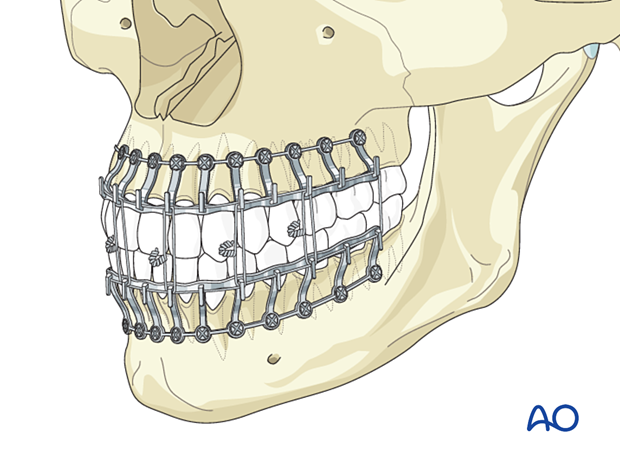Mandibulomaxillary fixation (MMF) - Bone supported devices
1. Teaching video
AO Teaching video on maxillomandibulary fixation (MMF)
2. Principles
The use of IMF screws and plates (eg, matrix wave plate) for maxillomandibular immobilization is considered an alternate.
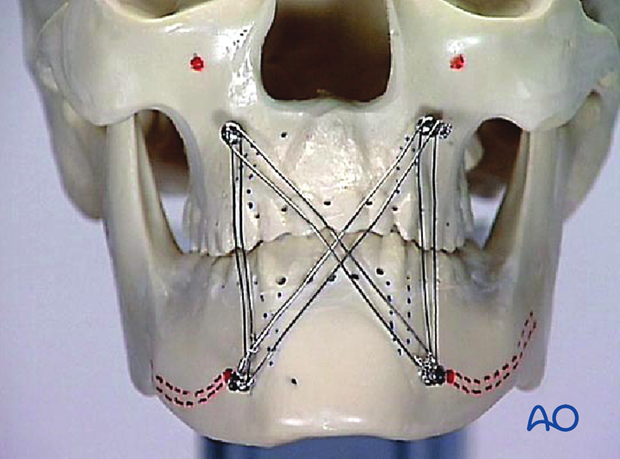
Indications:
- Emergency cases
- Patients with infectious diseases
- As an alternative, if arch bars cannot be applied
- Selected patients with simple fracture patterns or undergoing orthognathic and reconstructive surgery
Contraindications:
- Severely comminuted and displaced fractures
- Unstable, segmented fractures
- Children, if tooth buds are still in place
- Fracture patients with multiple mobile teeth
Check the position of the tooth roots, infraorbital, and inferior alveolar nerves before starting.
The screws' position should be symmetrical from jaw to jaw and should not interfere with the operative approach or internal fixation devices.
Long-term immobilization is not recommended because of the injuries to the mucosa.
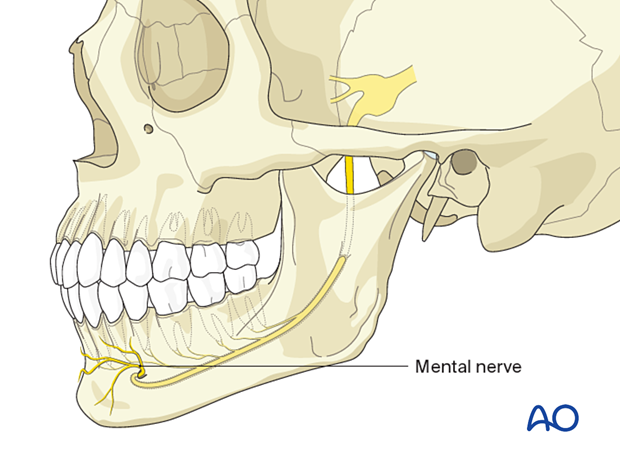
3. Screw design
IMF screws are made of stainless steel. They are self-drilling and self-tapping.
The screw head is raised and contains two holes in a cruciform configuration for wire placement.

4. Screw placement
Correct screw locations
Various IMF screw placement patterns exist and are dictated by fracture location and the patient's dentition.
The insertion point is limited by the position of the:
- inferior alveolar nerve
- infraorbital nerve
- tooth roots
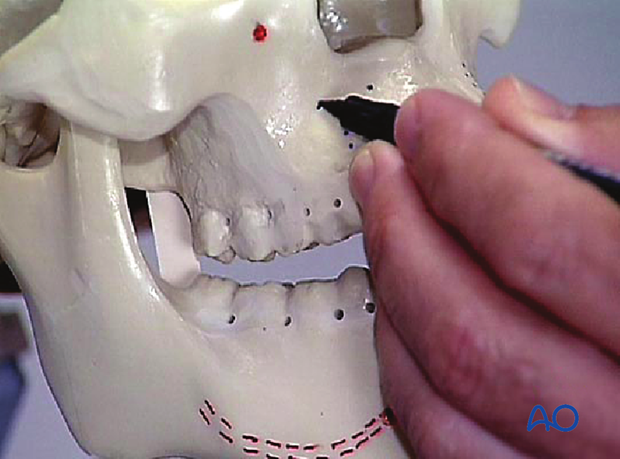
For correct placement, IMF screws must be located in the alveolus avoiding tooth roots.
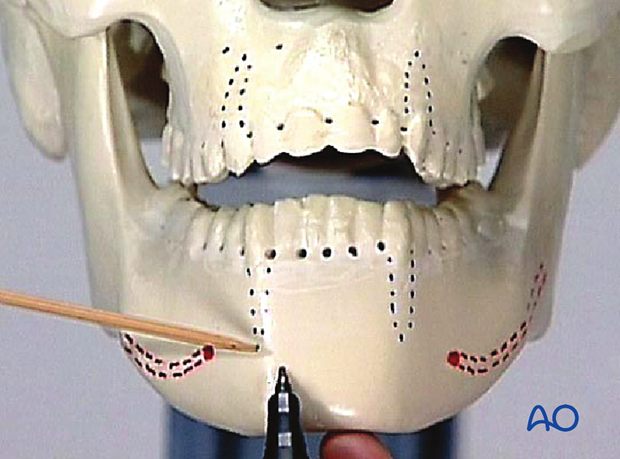
Screw insertion
Introduce self-drilling and self-tapping screws directly through the mucosa. Take care that the screw head does not compress the gingiva when fully seated.
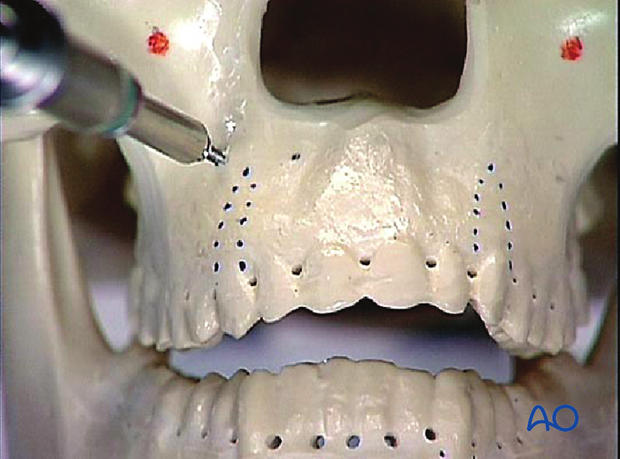
Insert two more IMF screws on the opposite side in the same manner.
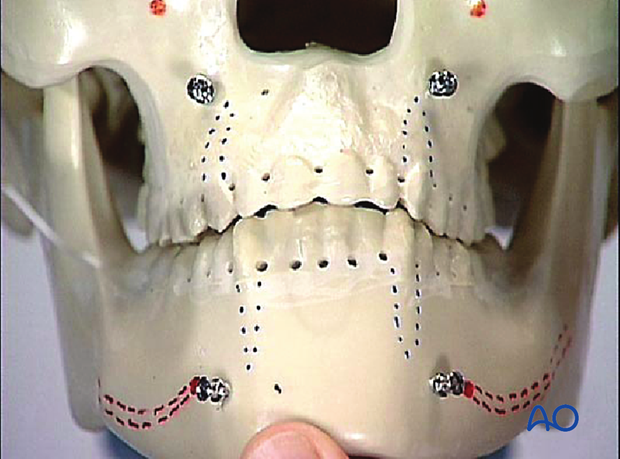
5. Maxillomandibular fixation (MMF)
Maxillomandibular fixation is performed with 0.4 mm wires.
The wire ligature is wrapped around the screw head grooves.
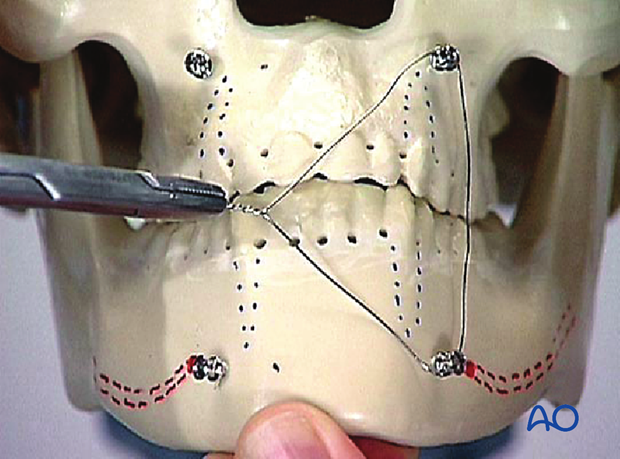
Before tightening the wires, the correct occlusion has to be established.
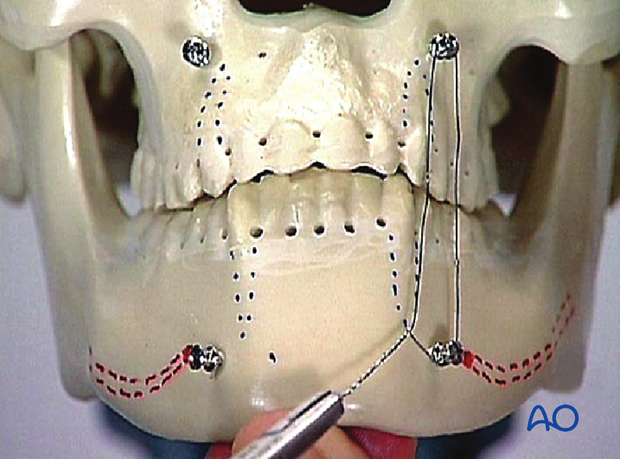
… around the lower screw.
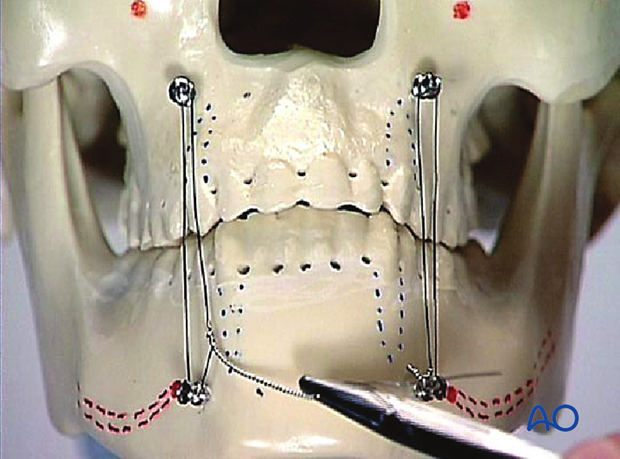
X-pattern
For more stability, wiring in an "X" pattern can be added.
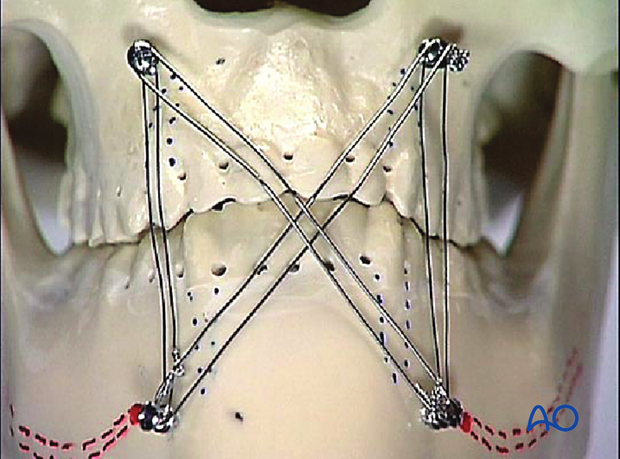
- Tightening the wires may create a posterior open bite. Additional IMF screws or Ernst ligatures placed on the posterior dentition may prevent or correct this condition.
- Over tightening the wires can also lead to a lateral rotation of the fragment.
- There may be a lack of stability due to the elasticity of the long span wires.
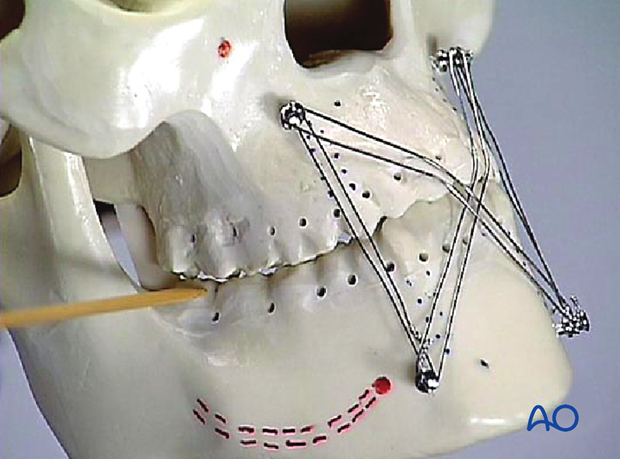
6. Alternative: screws and plate
From a 2.0 mandible plate, cut pieces of 2-hole length for the maxilla and 3-hole length for the mandible.
Bend these pieces away from the bone and fix them monocortically with 6 mm long 2 mm screws.
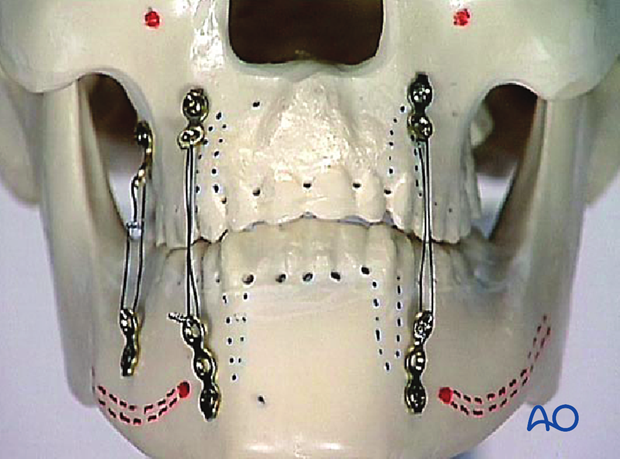
After establishing the occlusion, mandibulomaxillary fixation is established with 0.4 mm wires.
There may be a lack of stability because of the elasticity of the long span wires.
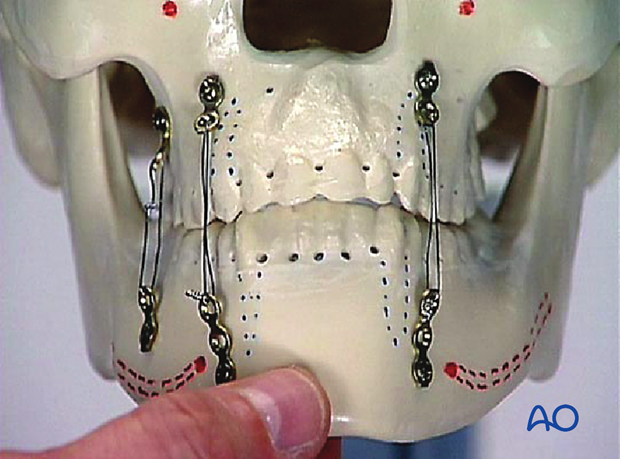
Edentulous fragments can be secured using inter-arch miniplates, which are applied transmucosally.
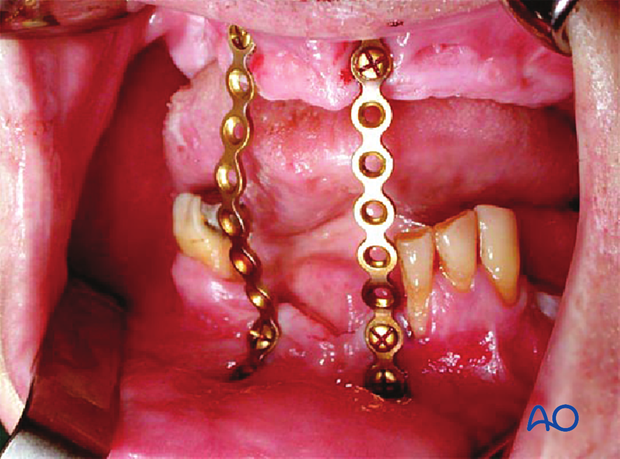
7. Alternative: MMF plating systems
These systems are using locking screws to minimize pressure on the gingiva.
The matrix wave plate is a bone-anchored intermaxillary fixation system.
This system offers excellent flexibility in the placement of the screws.
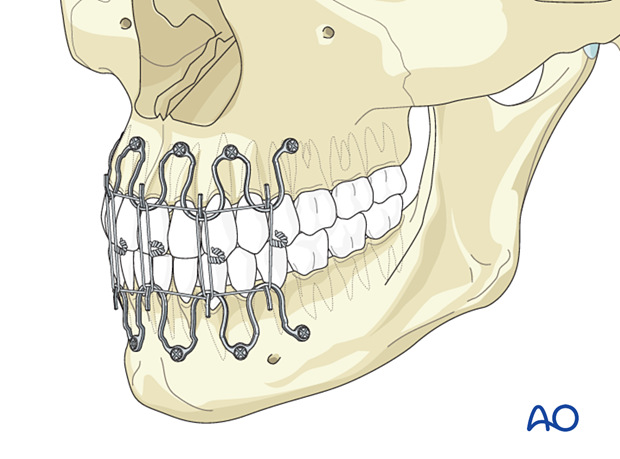
A more rigid variant, which is more like an arch bar screwed into the bone, may offer additional stabilization in cases with alveolar comminution.
These may behave somewhat like an external fixator for the alveolar segment.
